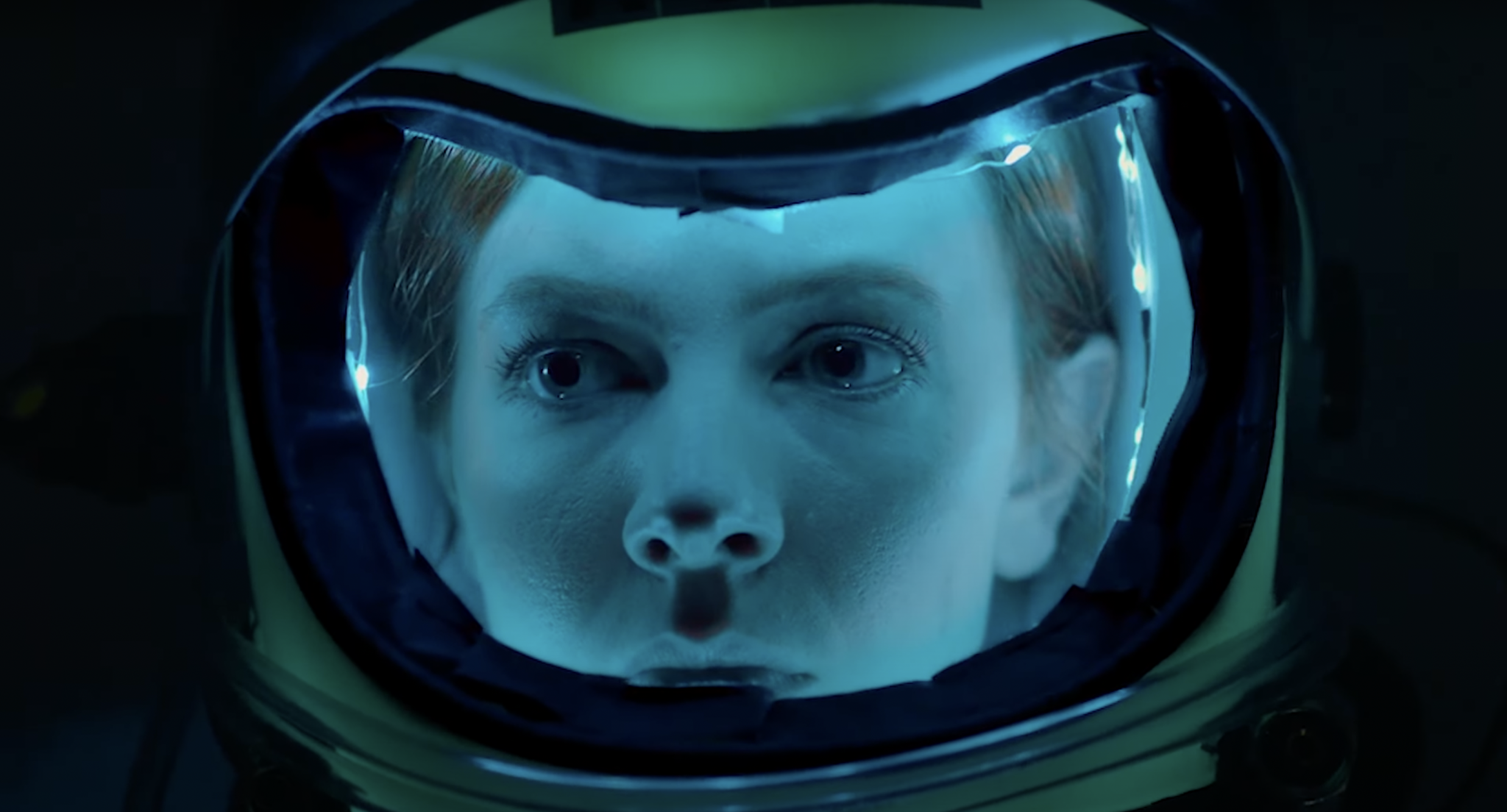Maryland is no stranger to low-budget productions.
In 1999, The Blair Witch Project became a cultural phenomenon after earning more than $248 million worldwide off a $60,000 budget. The horror flick, filmed in Burkittsville, Maryland and Seneca Creek State Park, became one of the highest-grossing horror films of all time and set a new standard for independent filmmakers.
In some ways, Hemisphere, feels like a sort of spiritual successor to the legendary found-footage film, but the locally-shot debut feature from director Chris Maes at times falls victim to its limited budget and choppy screenplay.
Hemisphere centers on Sandra Ramirez, a forensic scientist who is sent to investigate the vanished crew of a space station orbiting Mercury. But the mystery is flipped on its head when she encounters a survivor, Phoebe Westover, who forces Ramirez to rethink everything she thought she knew.
The film was shot in McLean, Virginia — just a half-hour drive west of College Park. University of Maryland alum Joe Tyler worked as the film’s director of photography, displaying an impressive skill set despite the production’s limited resources.
[‘The Ballad of Songbirds and Snakes’ successfully stands on its own]
The film’s setting, the Alta Mira space station, is a not-so-subtly disguised studio space, decked out in plastic facades that imitate the panels and technology of a futuristic space faring vessel. While the set-design effort is admirable, the effect is never fully sold. No amount of blue lighting or tacked-on styrofoam can distract from the station’s inexplicable hardwood floors.
The visual effects are of a similar quality, with textureless digital creations ambling across Mercury’s ridges and valleys. But unlike the questionable digital effects found in some recent blockbusters — Spider-Man: No Way Home, I’m looking at you — Maes’s film has a fair excuse.
Even the thriftiest science-fiction blockbusters, such as this September’s The Creator, carry price tags in the $80 million range. Maes was working with a fraction of that budget.
Where Hemisphere shines is in its lead performance. Ramirez is portrayed by Paige Rion, an actress who elevates the script’s limited depth. Maes’ script has a tendency to fall into well-worn cliches, but Rion’s performance successfully digs her character out of them.
Julie Kashmanian, who plays Westover, struggles more with the material. Her chemistry with Rion lights up the film’s moments of heavy dialogue, but she tends to flounder when left alone. Only Eduardo José Paco Mateo had it worse, as the actor was restricted to a pre-taped video screen performance that dashed any evidence of acting chops.
Like many indie debuts, Hemisphere struggles to keep pace across its runtime. Its first act hooks the viewer and the third act concludes the film in a suitably dramatic manner, but the screenplay sags in the middle.
[Inside SEE’s vision of student entertainment]
The lead actresses are left stranded in an air duct as disembodied, unseen marauders sack the ship — a plotline that is eventually revealed as a fakeout. The reveal doused any spark of tension built up during the film’s dull center.
What is consistent throughout the film is Tyler’s cinematography. More than anything, it’s his work that succeeds in transforming a Virginian studio into an intergalactic setting.
Tyler paints the frames in cool blues, punctured by stark crimsons when danger arises. A final act spacewalk is particularly impressive, as the story finally allows Tyler to expand beyond the claustrophobic corridors of the Alta Mira space station. Hemisphere is a tolerable debut that carries on the region’s independent film tradition, but remains crippled by its limited budget. The talent is there — but it may have been better suited for a less ambitious story.



